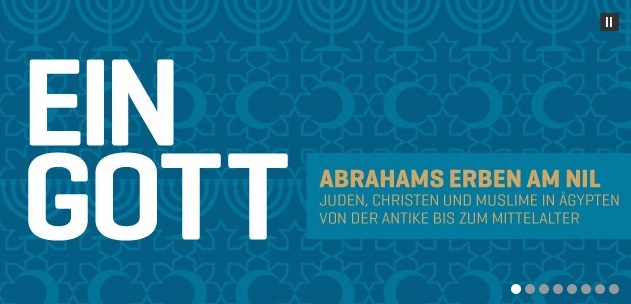ONE GOD - Abraham's Legacy on the Nile: Jews, Christians, and Muslims in Egypt from Antiquity until the Middle Ages, Bode-Museum, April 2–September 13, 2015
In Egypt, Judaism, Christianity, and Islam share a very long common history. ONE GOD - Abraham's Legacy on the Nile takes a closer look at the religious life and day-to-day coexistence of the three faith communities in Egypt, from the time of the Romans all the way up to the Fatimid caliphate in the 12th century. The exhibition shows that much can be learned from archaeological finds that reflect the largely peaceful coexistence of the world religions over the course of many centuries, especially when viewed in today's political climate.
On show are over 250 objects from Egypt's rich cultural heritage. Many come from the collections of the Staatliche Museen zu Berlin and Staatsbibliothek zu Berlin and have never gone on show before. The Berlin objects are enriched in number by outstanding pieces from the British Museum, Victoria and Albert Museum, the Louvre, the Cambridge University Library and other collections.
The exhibition takes its name from Abraham, the original father and archetype for monotheistic faith and a powerful common thread linking Judaism, Christianity, and Islam. Also presented in the exhibition are other figures that appear across all three religions, such as Moses, Daniel, Joseph, or the Archangel Gabriel, who were popular figures in Egypt. Based on evidence found in Egypt of the holy scriptures of Judaism, Christianity, and Islam, visitors are given a brief introduction to the essential characteristics of the three world religions. The display also reveals the different types of sacred buildings - synagogue, church, and mosque - and explains their architectural history and dissemination in Egypt.
The exhibition is not exclusively about religion; it also traces the everyday life of people in Egypt over hundreds of years. Objects on view reflect daily life, starting with birth, childhood, and school. In popular belief, magic also played an important role in all three religious communities. The exhibition ends with the funeral rites and concepts of the afterlife among Jews, Christians, and Muslims.
